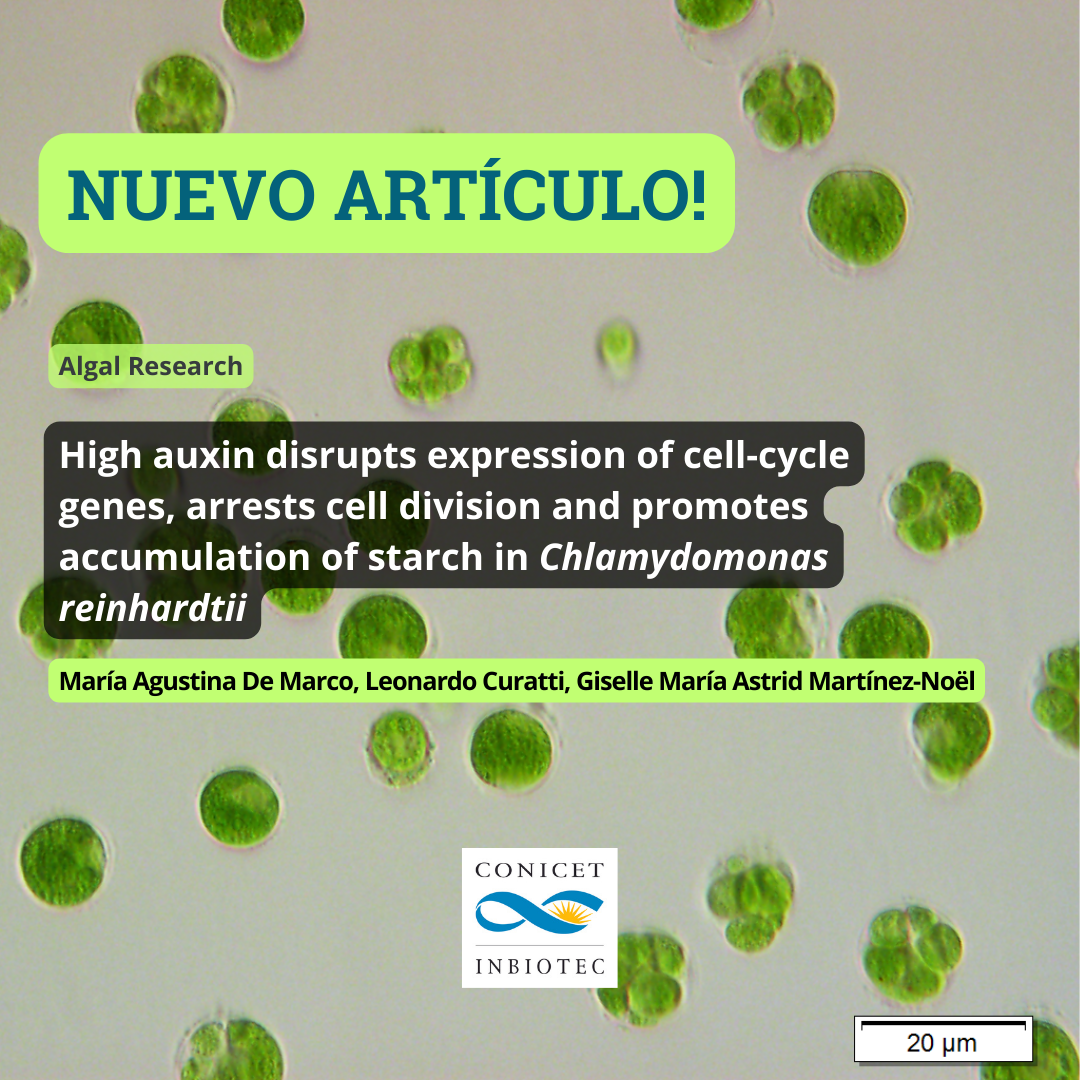Algal Research, 3 February 2024, 103419, 2024
Highlights
- High IAA arrests cell division and increases cell size, sustaining biomass production.
- High IAA induces carbon reserves accumulation.
- IAA may be essential to the proper progress of the cell cycle.
- IAA pretreatment protects cells against oxidative stress conditions.
- Evidence is provided that Chlamydomonas synthesizes and releases active auxin.
Abstract
The aim of this study was to contribute to the understanding of auxin signaling and response in the model alga Chlamydomonas reinhardtii. We show that high concentrations of indole-3-acetic acid (IAA) arrested cell division and promoted cell enlargement, which allowed maintenance of biomass production. Besides, high IAA induced carbon reserve accumulation. No synergistic or additive effect was observed after the combined supplementation of IAA and rapamycin, suggesting IAA and TOR (Target of Rapamycin) might share the same signaling pathway for the control of cell cycle. High levels of IAA strongly up-regulated the expression of the cell-cycle genes CDKB1 and CYCA1, and also transiently increased the levels of TOR transcripts. Cells previously incubated with IAA performed better under oxidative stress conditions, but not under saline stress, suggesting specificity of this response. The plant YUCCA inhibitor Bbo produced a dose-dependent inhibition of growth and chlorophyll accumulation, suggesting YUC-like genes implication in IAA biosynthesis in the alga, and that they might be essential for Chlamydomonas growth. Co-culture of Chlamydomonas and Arabidopsis thaliana indicated that the microalga synthesized and released biologically active form(s) of auxin. This study contributes to extending the current knowledge of IAA biosynthesis and response in algae, and its physiological, phylogenetic/evolutionary and biotechnological implications.
Graphical abstract


